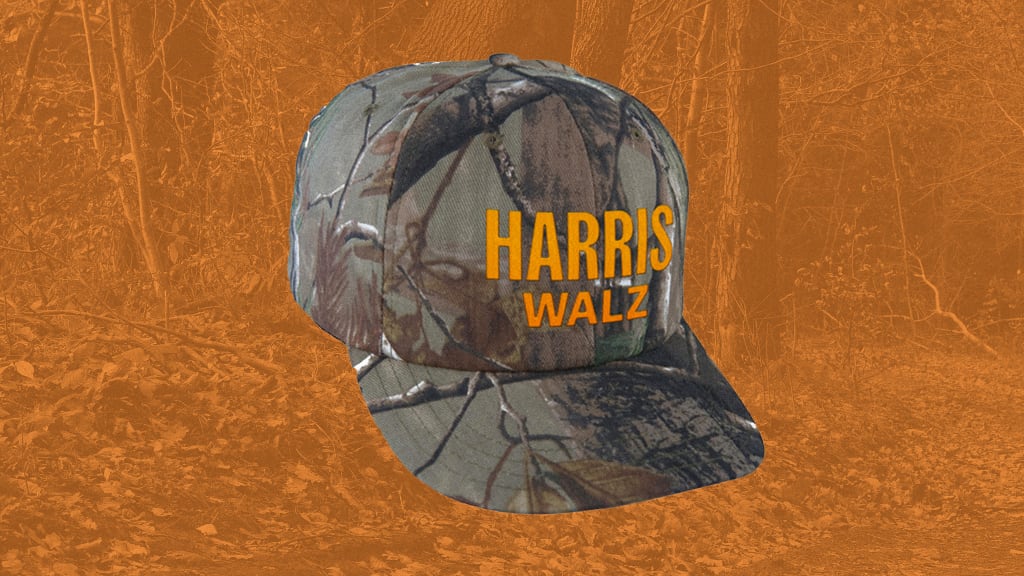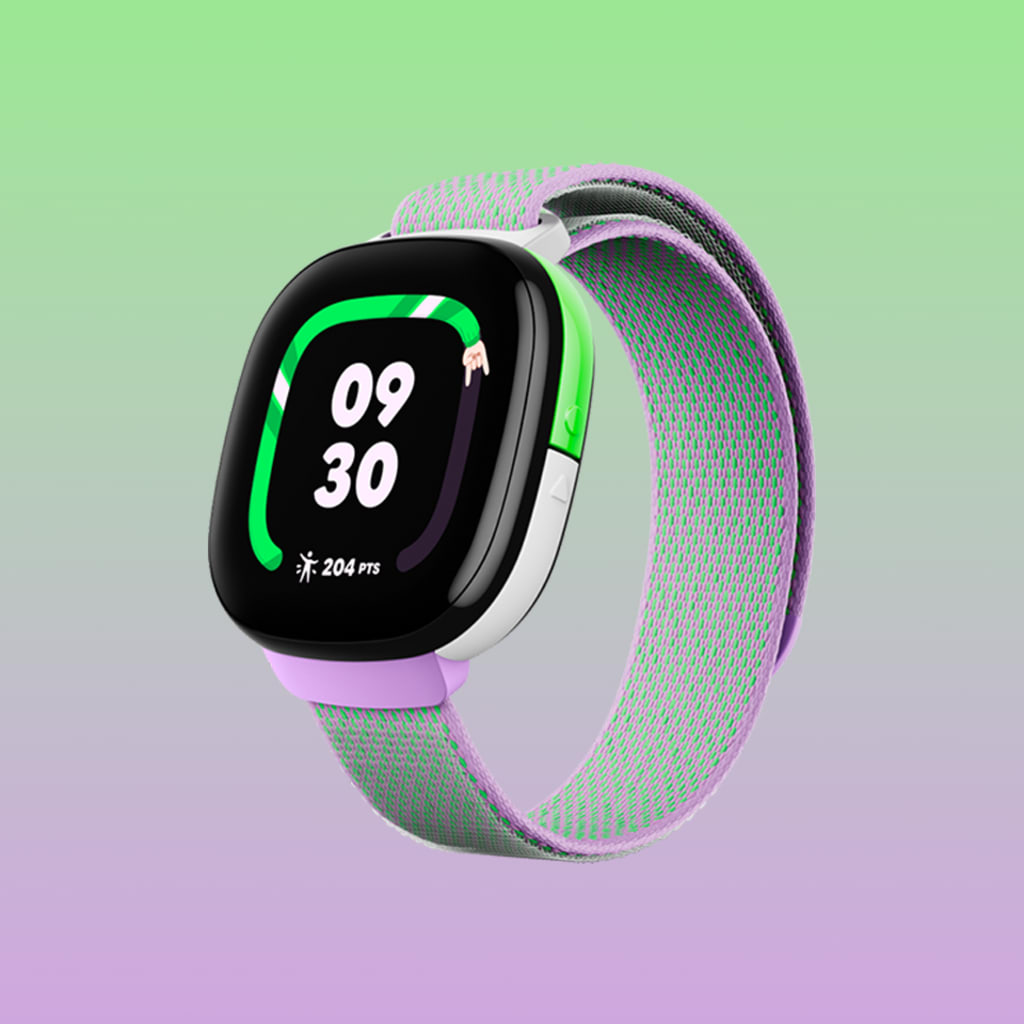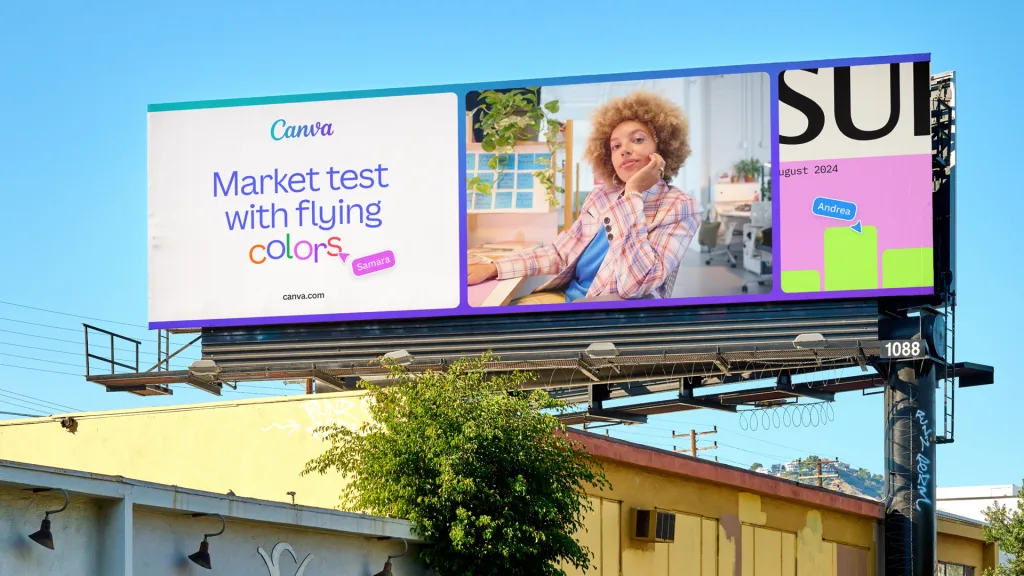This week, the Harris campaign pulled off yet another speedy rebrand, FitBit went after a younger consumer, and Canva decided to go all in on its ultra-colorful aesthetic. Here are the branding news stories we’re following.

The news: After Kamala Harris chose Minnesota Governor Tim Walz as her running mate on Tuesday, the designers on her campaign were sent into yet another frenzy to release a new visual identity for the ticket. The revamp comes two weeks after that same team created new assets for Harris’s presidential run in a matter of hours.
Big picture: The new Harris-Walz brand identity may seem understated at first, but it’s actually stylized to reflect the branding materials once used by Shirley Chisholm, a Black U.S. congresswoman from New York who became the first woman to run for a major party presidential nomination in 1972. This grounded, historical take is somewhat juxtaposed to the campaign’s merch and social media strategy, which is all about embracing Gen Z memes (like comparing Tim Walz to Chappell Roan) and projecting a humorous energy.
Why it matters: A political campaign’s assets tell an entire story about how they intend to pitch themselves. With its new logo and branding, the Harris-Walz campaign projects a down-to-earth vibe. On the other hand, the campaign isn’t afraid to take risks: Its tongue-in-cheek merch and witty personality on X communicate a youthful voice that breaks away from the more old school precedent set by the Biden campaign.

The news: FitBit just released a new product for kids, and it knows just how to get them into fitness: Turning exercise into Roblox.
Big picture: The Fitbit Ace LTE, designed for kids seven and up, includes its own immersive universe called Bit Valley, which looks strikingly similar to a…certain gaming platform. In Bit Valley, kids get a creature called an “eejie” who gets happier the more they move, thus theoretically convincing a “generation of gamers” to put down the controller and go outside.
Why it matters: Encouraging kids to get some exercise through gaming is nothing new—and for those of us who were traumatized by the body-shaming antics of Wii Fit in the early aughts, the Fitbit Ace seems like a more colorful, less damaging alternative. Bit Valley also ties into a growing trend of brands appealing to young consumers through immersive, gamified platforms—see Walmart’s trippy e-commerce site Walmart Realm, for example.

The news: Canva just got a glow up, designed by—you guessed it—Canva.
Big picture: The updated brand system is keeping its old logo but opting for a more meta, work-in-progress look (as well as a lot of neon colors). It leans into Canva’s editing software, showing cursors highlighting text, resizing boxes, and moving images. This emphasizes the process of creation on Canva rather than the finished product.
Why it matters: Canva clearly rejects techy minimalist aesthetics in favor of the complete opposite. This rebrand is a one-two punch of color and movement that certainly stands out from the crowd—but also is a bit reminiscent of Jojo Siwa in her bow era.
The news: For its 40th anniversary, Burt’s Bees is going camping. The company just dropped a new collection in collaboration with the branding agency Tavern that celebrates Burt’s Bees’ longtime partnership with the National Parks Service.
Big picture: Included in the collection is a new line of lip balms, water bottles, apparel, and outdoor gear, all decked out in a retro-inspired yellow and red color scheme. It calls back to a pre-y2k era of the summer camp experience with a distinctly ‘80s vibe.
Why it matters: Camping, it seems, is camp now—and brands want in on the trend. The camping aesthetic has recently appeared in a streetwear collaboration between Kith and Columbia, a swimwear collection repped by Minday Kaling, and even in an experiential marketing campaign from Home Goods.




















